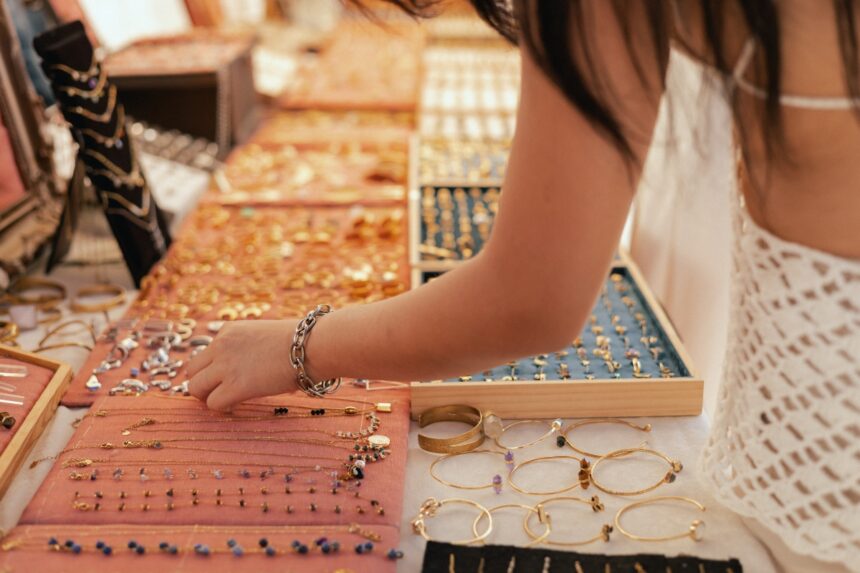Supplying jewellery that really sells isn’t about guesswork, it’s about identifying demand before competitors do and getting ahead of the game. But in the UK market, real trend alerts are usually buried beneath influencer noise, seasonal holiday hype, and short-lived social media spikes. For businesses trying to make clever buying or design decisions, the challenge is knowing what’s actually gaining long-term traction and what’s just passing through.
The following guide will break down a focused, step-by-step approach to research trends that you can used in your next collection. If you’re a retailer or buyer, the goal here is simple: use practical tools from reliable sources and local insight to find out which styles UK customers are looking to buy.
1. Begin with a clear goal
Prior to getting into research, you first need to clarify your goals. Begin by asking yourself:
- Who are the target audience: Young professionals? Gift buyers? Gen Z?
- Which jewellery niche are you focusing on: Fashion? Luxury? Specific items?
- Are you looking to sell every day, easy to wear pieces? Occasion-specific items?
By being specific in your goals, this will help you greatly ignore the noise and focus your research on where it counts.
2. Benefit from digital tools to assess customer demand
When you know what you’re looking to sell, use online tools to gather trend signals:
- Google Trends: Track UK search interest for keywords such as “silver huggies,” “layered necklaces,” or “personalised jewellery.” Try and look for consistent growth over several months, not just viral spikes.
- Amazon UK Best Sellers: Check out jewellery categories on Amazon and see what’s ranking consistently. Be sure to pay attention to product types, materials, and price.
- Pinterest and Instagram: These really visual platforms often show early signs of jewellery trends. Popular pins or reels can suggest what’s trending, such as minimalist chains, vintage-style lockets, or statement hoops.
These platforms reflect real-time consumer behaviour, making them great for identifying customer demand early on.
3. Review fashion and jewellery industry publications
Try and see beyond social media platforms and see what themes and designs editors are talking about:
- UK-based magazines like Vogue UK, Elle, and Stylist often highlight jewellery trends tied to runway seasons.
- Some industry-specific media outlets like Professional or Retail Jewellers cover market shifts and showcase up and coming UK jewellery designers.
- Fashion week summaries (especially London Fashion Week) sometimes include trending jewellery pieces and accessories that seem suitable for commercial sales months after the event.
Trends you see here are often in the early stage they won’t be everywhere yet, but that’s the opportunity.
4. What are your competitors doing?
Looking at what the competition are up to in the industry can offer you loads of clues as to what’s working, and what’s not in their business model.
- Have a look for ‘Latest’ sections or ‘Bestsellers’ categories on jewellery retailer websites.
- See which styles are restocked often—this is a really good indicator of demand.
- Use social media to see how their customers are reacting to their collections and new pieces
Be sure to pay attention to pricing too – Are affordable basics trending?… Or is there growing interest in premium or personalised items?
5. Look into social media trends
Social media, especially TikTok, is incredible at revealing fast-moving micro-trends. With hashtags like #earparty, #stackedrings, or #UKjewellerybrand, popular profile can expose what’s gaining traction, and equally which items are dropping in pace.
Reddit or niche forums frequently discuss emerging trends. User-generated content (UGC) on Instagram or TikTok can show how people are actually styling jewellery in reality. These are super important indicators of real-world appeal.
It’s also very important to listen to your own customers – Reviews, product returns, and customer service messages give us business owners an invaluable insight into what people do or don’t like.
6. Metal and design trends
Trends don’t come from just anywhere, they evolve from something, but the basis remains the same most of the time:
- Materials: Is demand growing for sterling silver over gold? Are pearls or enamel back in style?
- Finishes: Matte vs polished, raw vs refined—small design choices influence trendiness.
- Motifs: Repeating symbols (stars, hearts, moons, initials, or birthstones) can indicate what buyers are emotionally connecting with.
Tracking these elements helps you spot deeper, longer-lasting trends rather than just fleeting styles or colours.
7. Record what you find!
As you gather information, create a central place to track it – whether that’s a spreadsheet or a visual mood board. Include:
- Style or product name
- Where you saw it (platform, publication, competitor site)
- Any signs of traction (reviews, engagement, re-shares)
- Your thoughts on fit for your audience
Over time, you’ll start noticing patterns that help guide confident buying or design decisions.
8. Delegate the hard work to your supplier
If you’re in the sterling silver space or considering it, there’s another route: let a supplier do the research for you.
SilverJD, a UK-based sterling silver importer and wholesaler, does much of this trend-watching on behalf of their business customers. Their “Best Sellers” and “New Arrivals” sections are constantly updated based on what’s actually selling and what’s gaining attention across the UK market.
They study demand patterns, gather insights from bulk buyers, and add new designs weekly. For retailers and small businesses, this can act as a shortcut for trend research. Instead of starting from scratch, you can browse curated selections that already reflect real consumer preferences.
Whether you’re building out your core inventory or testing a new jewellery line, using a supplier like SilverJD can reduce guesswork and help you stay in sync with the market.


